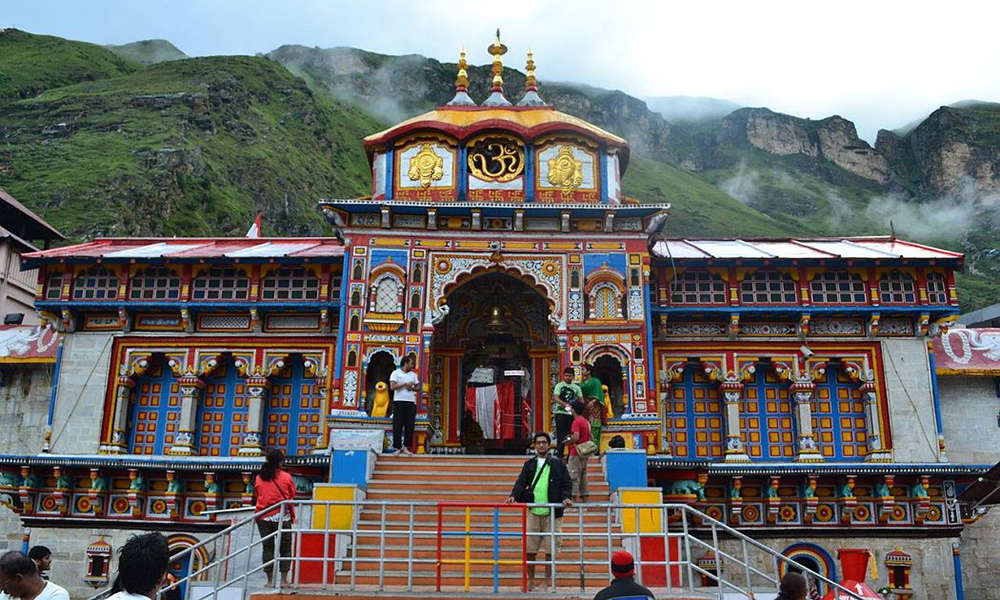Shri Badarinath Temple- Uttarakhand

Address
Shri Badarinath Temple, Badri to Mata Murti road, Badrinath, Uttarakhand 246422
Diety
Badrinayanan Amman: Aravindavalli
Introduction
The Badrinath Temple, also known as Badrinarayana Temple, is a significant Hindu pilgrimage site dedicated to Lord Vishnu. Located in the town of Badrinath in Uttarakhand, India, the temple holds great religious and cultural importance. The temple is situated in the Garhwal hill tracks in Chamoli district along the banks of the Alaknanda River.
Puranic Significance
- The Badrinath Temple is dedicated to Lord Vishnu and is one of the 108 Divya Desams, which are holy shrines revered by Vaishnavites.
- In addition to Vaishnavites, people following the Jain religion also worship the temple and the idol belonging to Rishbhdev (Rishabhanatha), the first Tirthankar of Jainism.
No-Construction Zone:
- In 2006, the state government declared the area around Badrinath as a “no construction zone” to prevent illegal encroachment.
Legends Associated with Badrinath:
- According to Hindu legend, Lord Vishnu sat in meditation at Badrinath. During his meditation, he was unaware of the cold weather. His consort, Lakshmi, protected him in the form of a Badri tree, which is a jujube or Indian date tree.
- Pleased by the devotion of Lakshmi, Vishnu named the place “Badrika Ashram.” Hence, Goddess Lakshmi is called “Badri Vishal,” and Lord Vishnu is known as “Badrinath,” the husband of Badri.
- Another legend suggests that the origins of Badrinath are related to the Himalayan mountains themselves, with Dharma’s two sons, Nar and Narayan, choosing the place to spread their religion.
Special Features
Seasonal Opening:
- The temple is open for worship for six months every year, between the end of April and the beginning of November. This is due to the extreme weather conditions in the Himalayan region, which make it inaccessible during the winter months.
Deity and Self-Manifestation:
- The presiding deity of the temple is a 1 ft (0.30 m) black granite idol of Lord Vishnu in the form of Badrinarayan.
- Many Hindus consider this deity to be one of the eight “swayam vyakta kshetras,” or self-manifested deities of Vishnu.
Ancient Texts and Renovations:
- The temple is mentioned in several ancient texts, including the Bhagavata Purana, Skanda Purana, and Mahabharata.
- Over the centuries, the temple has undergone major renovations due to its age and damage from natural disasters, such as avalanches.
- In the 17th century, the temple was expanded by the Kings of Garhwal. After significant damage during the great 1803 Garhwal earthquake, it was largely rebuilt by the King of Jaipur.
- The temple was still under renovation as late as the 1870s, but the work was completed by the time of the First World War.
Temple Structures:
- The temple complex consists of three main structures: the Garbhagriha (sanctum), the Darshan Mandap (worship hall), and the Sabha Mandap (convention hall).
- The sanctum has a conical-shaped roof, approximately 15 m (49 ft) tall, covered with a gold-gilt roof.
- The facade is built of stone with arched windows, and a broad stairway leads up to the main entrance.
Deities and Carvings:
- The main shrine houses the Shaligram deity of Lord Badrinarayana, who is depicted with a conch (Shankha) and a discus (Chakra) in two of his lifted arms, while the other two rest on his lap in a Yogamudra (Padmasana) posture.
- The temple contains images of other deities, including Kubera, sage Narada, Uddhava, Nar, and Narayan. There are also fifteen more images worshipped around the temple.
- The walls and pillars of the temple hall are adorned with intricate carvings.
Tapt Kund and Other Water Ponds:
- The Tapt Kund is a group of hot sulphur springs located just below the temple, which are believed to have medicinal properties.
- There are two water ponds in the temple complex known as Narad Kund and Surya Kund.
Festivals
The most prominent festival held at Badrinath Temple is Mata Murti Ka Mela, which commemorates the descent of the river Ganges on mother earth. The mother of Badrinath, who is believed to have divided the river into twelve channels for the welfare of earthly beings, is worshiped during the festival. The place where the river flowed became the holy land of Badrinath. The Badri Kedar festival is celebrated during the month of June in both the temple and the Kedarnath temple. The festival lasts for eight days; artists from all over the country perform during the function.
Century/Period/Age
2000 to 3000
Managed By
Government of Uttarakhand
Nearest Bus Station
Rishikesh
Nearest Railway Station
Rishikesh
Nearest Airport
Joly Grand









